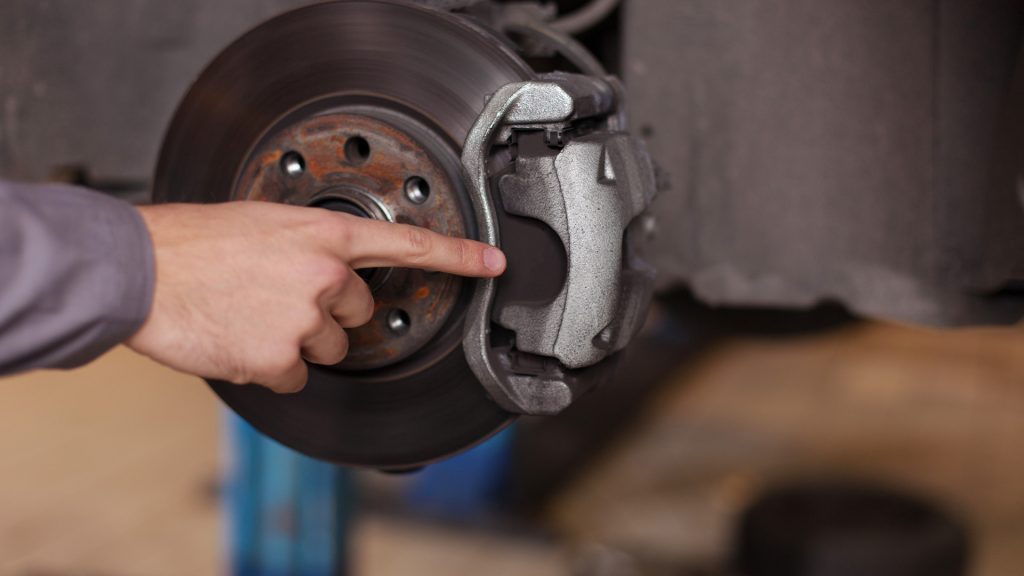How Long Does It Take to Change Brake Pads? A Comprehensive Guide
Changing brake pads is a critical maintenance task for vehicle owners that ensures safe and effective braking performance. While it may seem straightforward, the time it takes to change brake pads can vary depending on several factors, including the type of vehicle, the experience of the person performing the task, and the specific tools used. This article will explore the average time required to change brake pads, the factors that influence this time, and a detailed overview of the process involved.
Understanding Brake Pads
Brake pads are essential components of a vehicle’s braking system. They are designed to create friction against the brake rotors, which slows down or stops the vehicle when the brake pedal is pressed. Over time, brake pads wear down due to constant friction and heat generated during braking, necessitating replacement.
Average Time to Change Brake Pads
On average, changing brake pads typically takes between 1 to 2 hours. However, this time can vary based on several factors, which we will discuss in the following sections.
Factors Affecting the Time to Change Brake Pads
- Type of Vehicle: The make and model of the vehicle can significantly impact the time it takes to change brake pads. Some vehicles have more accessible brake systems, while others may require additional steps to reach the brake components.
- Experience Level: A professional mechanic will likely complete the task more quickly than a novice. Experienced technicians can often change brake pads in less time due to their familiarity with the process and the tools required.
- Tools and Equipment: The availability of the right tools can affect the efficiency of the brake pad replacement. Having specialized tools, such as a brake caliper tool or a torque wrench, can speed up the process.
- Condition of the Brakes: If the brake rotors also need to be replaced or resurfaced, this will add to the time required. Additionally, if there are complications, such as rusted bolts or damaged components, the process may take longer.
- Working Environment: A clean, organized workspace can facilitate a quicker job. Conversely, a cluttered or poorly lit workspace can slow down the process due to distractions or difficulties in accessing tools.
Steps to Change Brake Pads
Changing brake pads involves several steps, which can be broken down as follows:
1. Gather Necessary Tools and Materials
Before starting, ensure you have the following tools and materials:
| Tool/Material | Purpose |
|---|---|
| Jack and jack stands | To lift the vehicle for access to the brakes |
| Lug wrench | To remove wheel lug nuts |
| Brake pad replacement kit | New brake pads and necessary hardware |
| Brake cleaner | To clean the brake components |
| C-clamp or brake caliper tool | To compress the caliper piston |
| Torque wrench | To ensure proper tightening of bolts |
| Safety goggles | To protect your eyes during the process |
| Gloves | To keep your hands clean and protected |
2. Lift the Vehicle
- Park on a Level Surface: Ensure the vehicle is parked on a flat surface and engage the parking brake.
- Loosen Lug Nuts: Use the lug wrench to slightly loosen the lug nuts on the wheel where you will be changing the brake pads.
- Lift the Vehicle: Use the jack to lift the vehicle and place jack stands underneath for safety.
3. Remove the Wheel
- Take Off the Wheel: Once the vehicle is securely lifted, fully remove the lug nuts and take off the wheel to access the brake assembly.
4. Remove the Brake Caliper
- Locate the Caliper Bolts: Identify the bolts securing the brake caliper to the bracket.
- Remove the Caliper: Use the appropriate socket to remove the caliper bolts. Carefully slide the caliper off the brake rotor and support it using a bungee cord or wire to avoid putting stress on the brake line.
5. Remove the Old Brake Pads
- Take Out the Old Pads: Remove the old brake pads from the caliper bracket. Note how they are positioned for proper installation of the new pads.
6. Compress the Caliper Piston
- Use a C-Clamp: Place the old brake pad against the caliper piston and use a C-clamp or brake caliper tool to compress the piston back into the caliper housing. This step is necessary to create space for the new, thicker brake pads.
7. Install the New Brake Pads
- Position New Pads: Place the new brake pads into the caliper bracket in the same position as the old ones.
8. Reattach the Brake Caliper
- Slide the Caliper Back: Carefully slide the caliper back over the new brake pads.
- Secure the Caliper: Reinstall the caliper bolts and tighten them to the manufacturer’s specifications using a torque wrench.
9. Reinstall the Wheel
- Put the Wheel Back On: Place the wheel back onto the hub and hand-tighten the lug nuts.
- Lower the Vehicle: Carefully lower the vehicle back to the ground using the jack.
- Tighten Lug Nuts: Once the vehicle is on the ground, use the lug wrench to fully tighten the lug nuts in a star pattern to ensure even pressure.
10. Test the Brakes
- Pump the Brake Pedal: Before driving, pump the brake pedal a few times to ensure the brake pads are seated properly and the caliper piston is engaged.
- Test Drive: Take the vehicle for a short test drive to ensure the brakes are functioning correctly.
Time Estimates for Changing Brake Pads
The time it takes to change brake pads can vary based on the factors mentioned earlier. Here’s a general breakdown of time estimates:
| Vehicle Type | Estimated Time (Hours) |
|---|---|
| Compact Cars | 1 – 1.5 |
| Sedans | 1 – 2 |
| SUVs | 1.5 – 2.5 |
| Trucks | 2 – 3 |
| Performance Vehicles | 1.5 – 2.5 |
Conclusion
Changing brake pads is a vital maintenance task that can enhance your vehicle’s safety and performance. Understanding the time it takes to complete this task, as well as the steps involved, can empower you to take on this project yourself or communicate effectively with a professional mechanic. By following the guidelines outlined in this article, you can ensure that your brake pads are replaced correctly and efficiently.
FAQ Section
- How long does it take to change brake pads?
On average, changing brake pads takes between 1 to 2 hours, depending on the vehicle type and the experience of the person performing the task. - Can I change my brake pads myself?
Yes, if you have the necessary tools and knowledge, changing brake pads can be a DIY project. However, if you’re unsure, it’s best to consult a professional. - What tools do I need to change brake pads?
You will need a jack, lug wrench, brake pad replacement kit, brake cleaner, C-clamp or brake caliper tool, and a torque wrench. - How often should I change my brake pads?
Brake pads typically need to be replaced every 30,000 to 70,000 miles, but this can vary based on driving habits and vehicle type. - What are the signs that my brake pads need to be replaced?
Common signs include squeaking or grinding noises, a spongy brake pedal, and decreased braking performance. - Can I drive with worn brake pads?
It is unsafe to drive with worn brake pads, as this can lead to decreased braking performance and potential damage to the brake rotors. - How can I tell if my brake pads are worn?
Inspect the brake pads visually; if they are less than 1/4 inch thick, they likely need to be replaced. You can also listen for squeaking or grinding noises when braking. - Is it necessary to replace brake rotors when changing brake pads?
It is not always necessary, but if the rotors are worn or damaged, they should be replaced or resurfaced. - What happens if I ignore worn brake pads?
Ignoring worn brake pads can lead to more severe damage to the braking system, including damaged rotors and increased repair costs. - Are there different types of brake pads?
Yes, there are various types of brake pads, including ceramic, semi-metallic, and organic pads, each with its advantages and disadvantages.
Additional Resources
For more information on brake maintenance and safety, you can visit the following link:
This comprehensive guide provides insights into the importance of brake maintenance, including how to change brake pads and the time required for the task. If you have further questions or need additional information, feel free to explore more about vehicle maintenance and safety.



